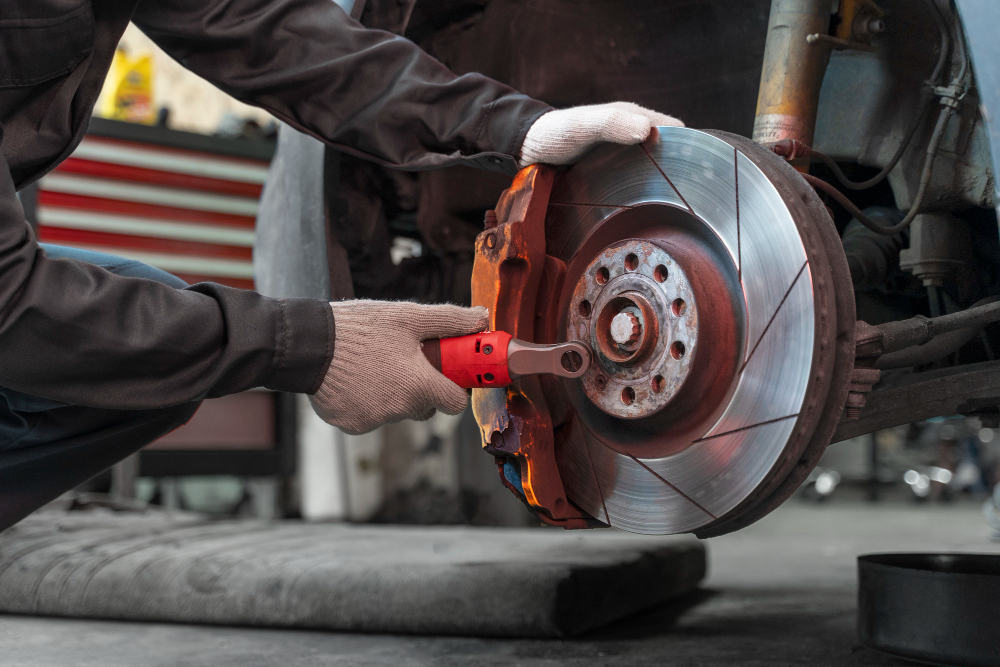Your brake pads are a vital safety component of your vehicle. Knowing how often you should replace your brake pads is crucial; neglecting timely replacement can lead to expensive damage or dangerous driving conditions. In this article, we’ll cover key factors affecting brake pad life, tips for monitoring wear, and when to schedule brake servicing in Northern Beaches at NM Performance Automotive.
What Determines Brake Pad Lifespan?
There’s no one-size-fits-all answer, because several variables influence how quickly brake pads wear out:
- Driving style: Aggressive braking, frequent stop-start driving, and downhill driving accelerate wear.
- Vehicle type and weight: Heavier vehicles or SUVs impose more load on brakes.
- Brake pad material: Organic, semi-metallic, ceramic. Each has different longevity and performance traits.
- Road conditions: Hilly terrain, coastal salt air, and rough surfaces (common in the Northern Beaches) can increase wear.
- Brake rotor condition: If rotors are warped or damaged, they can reduce pad life and require replacement or resurfacing.
General Guidelines
As a rule of thumb:
- Many brake pads require replacement every 30,000 to 50,000 km, but this is only a guideline.
- Some high-performance pads on sporty or towing vehicles may wear out in as little as 20,000 km.
- In light driving conditions (mostly highway, gentle braking), pads might last 60,000–70,000 km or more.
- For vehicles in coastal or hilly areas, particularly in the Northern Beaches region, wear can be accelerated.
Hence, regular inspections and brake pad replacement when needed are essential.
Signs You Need Brake Pad Replacement
You should schedule brake inspection and service if you notice any of the following:
- Squealing, squeaking, or grinding noises — often a wear indicator sensor or metal-on-metal contact.
- Reduced braking responsiveness or “spongy” feel in the pedal.
- Vibration or pulsation under braking, possibly indicating warped rotors.
- Brake warning light on the dashboard (on some newer cars).
- Visible thickness of the pad — a visual inspection revealing less than 3 mm of friction material.
- Metallic scraping sounds, a bad sign that the pads are very worn and contacting the rotor.
If you detect any of these signs, it’s time to bring your car in for brake pad repair or replacement.
Why Regular Inspections Matter
Even if your pads seem “fine,” periodic inspections every 10,000–15,000 km (or at every service) are wise. A professional mechanic can:
- Measure the remaining pad thickness
- Check the calliper and brake hardware
- Assess rotor condition
- Check brake fluid condition and lines

Special Considerations for the Northern Beaches Region
In the Northern Beaches area, including Mona Vale, Avalon, Narrabeen, and surrounding suburbs, conditions specific to coastal driving can exacerbate brake wear:
- Salt air and humidity can accelerate corrosion of brake hardware, requiring more frequent servicing or hardware replacement.
- Hilly roads and steep climbs/descents place heavier demands on brake systems, increasing wear.
- Stop-start urban traffic in local suburbs causes more frequent braking cycles.
Because of these factors, residents should be especially proactive about brake servicing in Northern Beaches with a trusted local workshop like NM Performance Automotive.
When to Schedule Replacement
Here’s a rough timeline you can use as a guide (customised further by your vehicle and driving habits):
| Interval / Condition | Action |
| 10,000–15,000 km | Inspect brake pads and condition |
| 20,000–30,000 km | Likely need repair or light replacement for some vehicles |
| 30,000–50,000 km | Most brake pads will require full replacement |
| Signs of wear (noise, vibration, warning light) | Replace immediately, regardless of mileage |
Frequently Asked Questions (FAQs)
How often should I check my brake pads?
Can I replace just one brake pad instead of all four?
Is brake pad replacement covered by warranty?
What types of brake pad materials are best?
Conclusion
Knowing how often you should replace your brake pads is essential to maintaining your vehicle’s safety, performance, and avoiding more serious damage. At NM Performance Automotive, we specialise in expert brake inspections, quality parts, and clear, honest advice. If you suspect it’s time to check or replace your brake pads, contact us to book your brake service. Drive safely and trust us to keep your brakes at their best.
